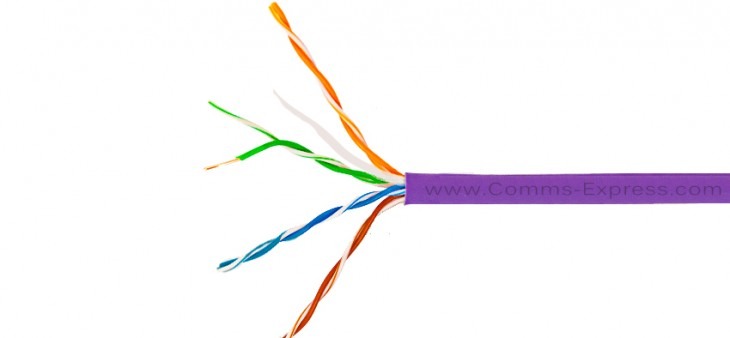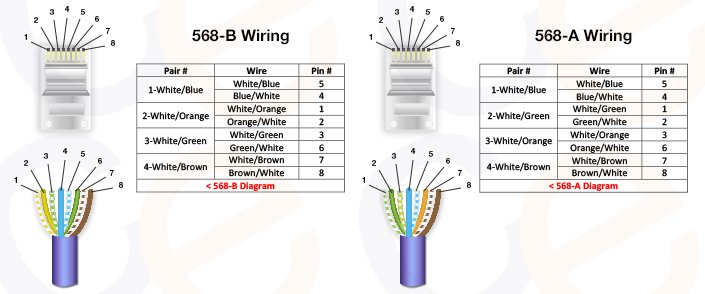
Cat5e cables: the backbone of wired networks. Learn how to wire them for optimal performance.
A Cat5e wiring diagram will show how Category 5e cable is usually comprised of eight wires, which have been twisted into four pairs. The twists counteract interference. A Cat5e cable has improvements in its twist ratio when compared to a Cat5. This enhanced cable is used for a variety of installations, including crossover and patch cabling. Ethernet cable wiring is based on standards in order to achieve optimal performance. There are two common Cat5e cable wiring schemes, 568A and 568B, that are used with an 8-position connector like an RJ45. The A and B standards are similar, and both Cat5e wiring schemes establish a connection for reliable Ethernet applications.
Key Takeaways:
- Cat5e supports Gigabit Ethernet speeds (up to 1,000 Mbps).
- Choose between solid (permanent runs) or stranded (flexible) cable.
- Two wiring schemes (T568A and T568B) ensure reliable connections.
Q: What type of cable is Cat5e and what is it used for?
A: Cat5e (Category 5 enhanced) cabling is the workhorse of modern networks. It supports Gigabit Ethernet speeds, making it ideal for data transfer, multimedia applications, and connecting network devices. This guide explores Cat5e wiring basics, including cable types and the two common wiring schemes (T568A & B) used for optimal performance.
Cat5e Wiring Diagrams

Cat5e Wiring Basics
Network installers and enthusiasts alike know the importance of a solid foundation. That’s where Cat5e cabling comes in. But mastering this technology goes beyond just plugging in cables. This guide dives deep into the essentials of Cat5e, equipping you with the knowledge to select the right cables, terminate them like a pro (with the perfect wiring scheme), and optimize your network for flawless data transmission. Bulk-stranded cable is sold in various colours and used to make patch cords.
Cat5e Cable Installations
Popular Cat5e cable consists of pairs of twisted copper wire that are often terminated in RJ45 connectors. An RJ45 modular plug can be installed on a CAT5e cable by rearranging the conductor pairs beneath the cable jacket into a specific colour sequence. The pairs are then inserted into the plug. Category 5e specifications designate the maximum amount of twist and cable jackets that should be removed during installations.
Cat5e cables, the workhorses of many wired networks, are more than just colourful wires. Each cable contains four twisted copper pairs, designed to minimize electrical interference and ensure reliable data transmission. But how do these pairs connect to your devices? That’s where the RJ45 connector, often called an “Ethernet jack,” comes in.
Think of the RJ45 connector as the translator for your network. To create a seamless connection, the coloured wires inside the Cat5e cable need to be arranged in a specific order and then carefully inserted into the jack. Here’s where it gets interesting: there are actually two industry-standard wiring schemes, T568A and T568B. Both achieve the same goal, but using the correct one is crucial for proper communication between devices.
Cat5e specifications also define critical measurements for cable preparation. The amount of cable jacket removed and the twist length of the copper pairs directly impact signal quality. Following these guidelines ensures a clean and secure termination, minimizing the risk of connection issues.
In essence, Cat5e termination is the secret handshake that allows your devices to talk to each other. By understanding the components (wires, jacks, and wiring schemes) and following best practices, you can create a reliable and efficient wired network.
Contact us with your questions about Cat5e cabling today.
Related Links
RJ45 Connectors & Adapters
Patchcord Cable
Cat5e Cable
Cat5e RJ45 Ethernet Cable/Patch Leads & Cables
